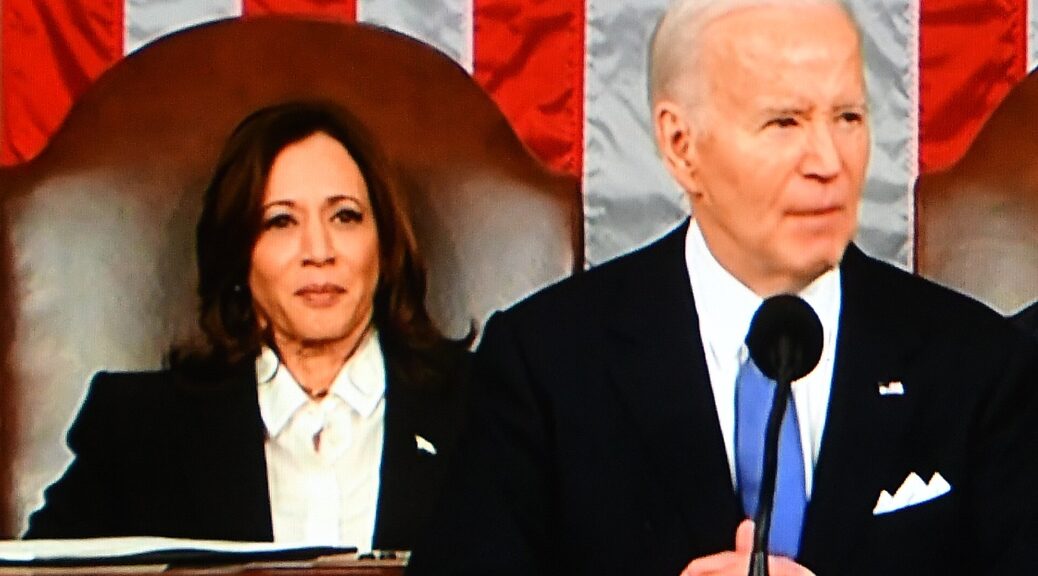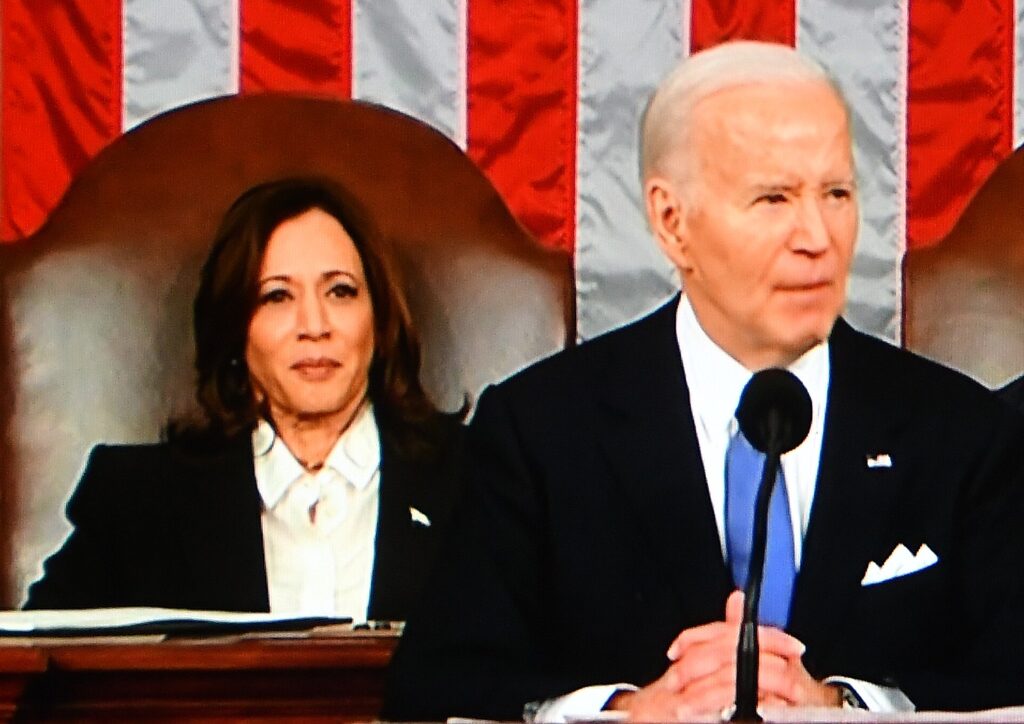$3 billion in funding from President Biden’s Investing in America Agenda will accelerate progress toward the President’s commitment to replace every lead pipe in the country within a decade – that is if Biden and Democrats remain in power. This fact sheet is provided by the White House:

President Biden believes that every American should be able to turn on the tap and drink clean, safe water. But over 9 million homes, schools, day cares, and businesses receive their water through a lead pipe, putting people at risk of lead exposure. Lead is a neurotoxin that can irreversibly harm brain development in children, and it can also accumulate in the bones and teeth, damage the kidneys, and interfere with the production of red blood cells needed to carry oxygen. Due to decades of inequitable infrastructure development and underinvestment, lead poisoning disproportionately affects low-income communities and communities of color. There is no safe level of exposure to lead. That is why the President made a commitment to replace every lead pipe in the country within a decade and coordinated a whole of government effort to deploy resources and leverage every tool across federal, state and local government to address lead hazards through the Lead Pipe and Paint Action Plan.
As part of this unprecedented commitment, President Biden traveled to Wilmington, North Carolina, to announce $3 billion through his Investing in America agenda to replace toxic lead pipes. This investment, administered by the Environmental Protection Agency (EPA), is part of the historic $15 billion in dedicated funding for lead pipe replacement provided by the President’s Bipartisan Infrastructure Law. The announcement delivers funding to every state and U.S. territory to help address lead in drinking water while creating good-paying jobs, many of them union jobs. In addition, this program funding is part of the President’s Justice40 Initiative, which set a goal that 40% of the overall benefits of certain federal investments flow to disadvantaged communities, and is helping address the inequities of lead exposure.
Additionally, to further reduce lead exposure, the Department of Housing and Urban Development announced nearly $90 million in available funding to reduce residential health hazards in public housing, including lead-based paint hazards, carbon monoxide, mold, radon, fire safety, and asbestos, advancing the President’s Lead Pipe and Paint Action Plan.
The announcement from the EPA builds on more than $20 billion in water infrastructure investments that state and local governments have made through the President’s American Rescue Plan. North Carolina has invested close to $2 billion from the American Rescue Plan in more than 800 clean water, wastewater, and stormwater projects across the state and is using another $150 million to test for and remove lead hazards in every school and child care center across the state, a historic effort to remove lead from North Carolina schools.
In Wilmington, North Carolina, President Biden announced $76 million from his Bipartisan Infrastructure Law for lead pipe replacement across the state. The President also met with faculty and students from a Wilmington school that replaced a water fountain with high levels of lead with funding from his American Rescue Plan.
EPA estimates North Carolina has an estimated 300,000 lead pipes, and today the President will highlight his goal of replacing every lead pipe in the state. With today’s new investment of $76 million, the President has now delivered $250 million in Bipartisan Infrastructure Law funding to North Carolina for lead pipe replacement. This funding has already reached over 60 communities across the state to kick start lead pipe identification and replacement efforts.
One of these communities is Wilmington, North Carolina, which has already received over $4 million from the Bipartisan Infrastructure Law to identify and replace 325 lead pipes. Today, President Biden is announcing that the first Bipartisan Infrastructure Law-funded lead pipe replacement in Wilmington is now underway, kicking off this project for the city.
Progress Replacing Lead Pipes Across America
The Biden-Harris Administration is taking action to accelerate lead pipe replacement in communities across the country. The total lead pipe replacement funding announced by the Administration to date will replace up to 1.7 million lead pipes, protecting countless families and children from lead exposure.
To ensure that communities that bear most of the burden of lead exposure are not left behind in this opportunity, EPA and the Department of Labor are partnering directly with disadvantaged communities across the country to provide the support and technical assistance they need to secure funding for and execute lead pipe replacement initiatives. EPA has partnered with over 40 communities to date, and last November announced it would partner with 200 more communities through the EPA Get the Lead Out Initiative.
This work is also creating good-paying jobs, many of them union jobs, in replacing lead pipes – and accelerating the development of a skilled water workforce. Unions including the Laborers’ International Union of North America (LIUNA), the United Association of Plumbers and Pipefitters, and the International Union of Operating Engineers are already training workers in lead pipe replacement and putting them to work on neighborhood blocks across the country. The EPA estimates that 200,000 jobs have been created by the Administration’s investments in drinking water infrastructure alone.
In addition, last November, EPA issued a proposal to strengthen its Lead and Copper Rule that would require water systems to replace lead pipes within 10 years and drive progress nationwide toward reducing lead exposure.
The examples below highlight several communities where the Administration’s investments are making an impact:
- In Milwaukee, Wisconsin, $41 million from the Bipartisan Infrastructure Law has helped put the city on track to replace all its lead pipes within 10 years instead of the initially estimated 60 years. The city is using a high proportion of union labor to replace lead pipes, and will be one of four new White House Workforce Hub cities that were announced by President Biden last week.
- Following a lead-in-water crisis, Benton Harbor, Michigan, successfully replaced all its lead pipes within just two years, fueled by $18 million in funding from the President’s American Rescue Plan.
- Pittsburgh, Pennsylvania, has received $42 million from the Bipartisan Infrastructure Law to replace lead pipes, and is on track to replace every lead pipe by 2026. Vice President Harris visited the city in February to highlight this progress in lead pipe replacement and announce new funding for clean water.
- St. Paul, Minnesota, has received $16 million from the American Rescue Plan to replace lead pipes. This funding has enabled the city’s Lead-Free St. Paul program to target the replacement of all lead pipes by 2032 at no cost to residents.
- Cincinnati, Ohio, passed an ordinance to develop a program to replace all lead pipes in line with the President’s goal, and authorized covering the cost of replacing private lead pipes that bring water to residents’ homes. A $20 million investment from the Bipartisan Infrastructure Law will support this work.
- Tucson, Arizona, received $6.95 million to develop a Lead Service Line inventory for their nine public water systems. The city will use this inventory to develop a plan to replace lead service lines in the community and improve drinking water quality for residents – many of whom live in low-income and disadvantaged communities.
- Denver, Colorado, has replaced almost 25,000 lead service lines since the program launched in 2020. Denver plans to replace another 5,000 this year and is on target to replace 100% by 2031, accelerating its lead pipe replacement due to Bipartisan Infrastructure Law funding.
- Last week, at the White House Water Summit, the Great Lakes and St. Lawrence Cities Initiative launched its new Great Lakes Lead Pipes Partnership with three of its members – Chicago, Illinois, Detroit, Michigan, and Milwaukee, Wisconsin. This first-of-its kind, mayor-led effort to accelerate lead pipe replacement in cities with the heaviest lead burdens will provide a collaborative forum for metropolitan areas in the Great Lakes to share emerging best practices to encourage faster, more equitable replacement programs and overcome common challenges, including reducing replacement costs, improving community outreach, and spurring water workforce development.
Broader Administration Actions to Deliver Clean Water
The funding announced today is part of the over $50 billion provided by the Bipartisan Infrastructure Law to upgrade the nation’s water infrastructure – the largest investment in clean and safe water in American history. In addition, over $20 billion from the American Rescue Plan has been invested in water infrastructure, including lead pipe replacement, nationwide.
Beyond replacing lead pipes, these broader investments are helping to expand access to clean drinking water, improve wastewater and sanitation infrastructure, and remove per- and polyfluoroalkyl substances (PFAS) contamination in water. The Administration has launched over 1,400 of these projects to deliver clean water to date.
Delivering Clean Drinking Water. The Bipartisan Infrastructure Law invests nearly $31 billion in funding to secure clean drinking water through infrastructure projects such as upgrading aging water mains and improving water treatment plants.
Improving Wastewater and Sanitation Infrastructure. Over 2 million people in the U.S. live without basic running water or sanitation systems in their homes. The Bipartisan Infrastructure Law invests nearly $13 billion to improve wastewater, sanitation, and stormwater infrastructure.
Tackling PFAS Pollution in Water. Exposure to PFAS “forever chemicals” in drinking water is linked to severe health impacts including deadly cancers, liver and heart damage, and developmental impacts in children. The Bipartisan Infrastructure Law invests $10 billion to address toxic PFAS pollution in water. In addition, this month EPA announced the first-ever national drinking water standard for PFAS , which will protect 100 million people from PFAS exposure.














